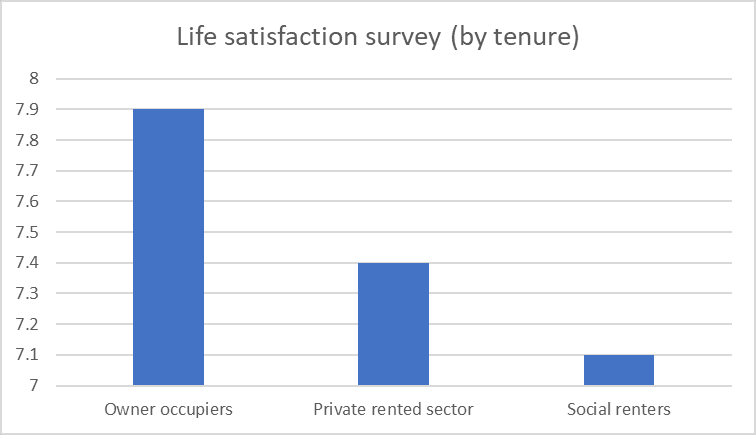One of the key insights we took away from National Housing Federation’s Housing Summit last week, was the prediction that the “levelling up” agenda would manifest itself as a “placemaking” agenda. Commentators thought that political and financial resources would flow towards making high streets and neighbourhoods great places to live. We’ve also seen that “placemaking” is one of the criteria for which investors are seeking data from landlords.
But what is placemaking? A quick search on the Department for Levelling Up’s website revealed nothing. So, we thought we’d put our thoughts together. Another factor that prompted our thoughts was recent data from the English Housing Survey [1] which showed lower levels of wellbeing in social housing tenants compared to other tenures. Surely this is something that should be addressed by levelling up too.

If we can bundle wellbeing into the placemaking agenda, then it may be helpful to use Maslow’s hierarchy of needs as a framework for helping to define great placemaking and what landlords can do to help.
Basic and security needs
According to Maslow [2], in general, before we can hope to get to higher levels of wellbeing, we must build secure foundations. This must surely include environmentally and physically secure homes:
- Energy efficient homes – improving local air quality, increased financial security for people in them via cheaper bills, contribution to reducing CO2 and hence adverse effects of climate change
- Water efficient homes – climate change will mean less annual water in the UK per capita
- Flood proof/resilient homes – even though there will be less annual rain, when rains come the intensity will be higher leading to new forms of flooding
- Heatwave resilient homes – to cope with projected increased summer temperatures
- Homes and neighbourhoods secure from crime and ASB – clever design and liaison with relevant police forces
- Green spaces – improved air quality, summer cooling, flood attenuation, increased biodiversity, increased recreational potential
Mental wellbeing needs
Theoretically, Maslow’s social, esteem and “self-actualisation” needs can be met by individuals provided the basics are covered. However, there may be inadvertent barriers created as a result of poor area design. Many landlords are already building infrastructure and schemes that can help and here are some examples. Perhaps all landlords should be doing these things:
- Social needs – community centres; lots of green space to allow people to get together; organise community events
- Esteem – improving skills via grounds maintenance jobs; building local shops to provide jobs for people to train up for; organising local competitions
- Self-actualisation – infrastructure that gives people time so they can pursue their true potential – e.g. excellent sustainable transport infrastructure to reduce commute times; building homes suitable to working from home (adequate space, broadband etc)
Manage what you measure
If “placemaking” continues to be the future direction of travel (and why wouldn’t it?) then establishing metrics and kpis will be more vital than ever. Many people already know SHIFT Environment for our science based environmental metrics. We also have suggestions to share on kpis for wellbeing too. We suggest resident “life satisfaction” surveys coupled with surveys to establish the contribution of the landlord to that life satisfaction. This will also provide extra data for investors calls for “placemaking” activities.
[1] English Housing Survey, 2019 to 2020
[2] There is academic research which indicates that satisfying Maslow’s hierarchical needs correlates with subjective wellbeing. See the research here.
